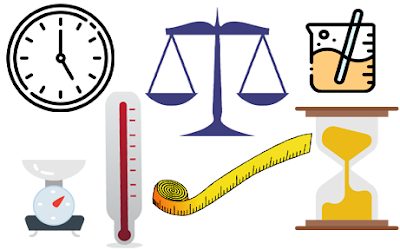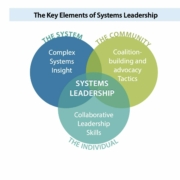Silos to Systems: The Next Generation of Sustainability Measurement and Reporting
This blog Silos to Systems: The Next Generation of Sustainability Measurement and Reporting is by Allen L. White Global sustainability research, advocacy and institution-building. It is based on his Keynote Address at the International Conference, Measuring and Reporting Sustainability Performance: Are Corporations and SSE Organizations Meeting the SDG Challenge organised by the United Nations Research in Social Development (UNRISD) on 3–4 June 2019 in Geneva, Switzerland.
It is a great pleasure to share a few perspectives with this distinguished group of thought leaders in the field of sustainability measurement and reporting. My appreciation to UNRISD, Il Cheong, and his team for the kind invitation.
This convening comes at a critical moment for all those concerned about securing a just, thriving future. The daily newsfeed depicts alarming, concurrent threats to realizing such a vision. Some are existential, such as nuclear conflict, climate disruption, and species extinction. Others pertain to issues of economic and social justice, such as wealth disparities, human trafficking, employment insecurity, and privacy.
Collectively, these conditions constitute a global trajectory trending away from a just, livable world, drifting instead toward an increasingly perilous ecological future of haves and have-nots. The so-called “End of History” hypothesis, in which the postwar liberal order would bring a permanent era of inclusive prosperity and durable peace, seems increasingly fragile and distant.
Against this backdrop, my remarks focus on macro-level, systemic issues and their relationship to the future of sustainability measurement and reporting. I begin with a brief retrospective on the roots of the sustainability movement and associated measurement initiatives. I then sketch some of the key enhancements to measurement essential to remaining relevant in our fast-changing, perilous world. I conclude with a call-to-action for reframing measurement in ways that align with a transformational vision of 21st century enterprises.
A central thread of my remarks is the belief that measurement is not simply a mechanical, quantitative exercise. Instead, in circular fashion, what we choose to measure both reflects and shapes, monitors and reinforces, what we value and how we activate such values in managing our enterprises.
Scale and Shareholderism
Four decades have passed since the publication of the seminal Brundtland Report, which called for a commitment to meeting the needs the present without sacrificing the capacity to meet the needs of future generations. Brundtland argued that the oneness of humanity and ecology requires transnational cooperation to achieve a truly sustainable future. One planet, one system, one grand web of connectivity among all living organisms that are the foundation of a flourishing world.
Brundtland, building on the earlier Limits to Growth report from the Club of Rome, ushered in an era of initiatives that would reshape how we define and measure progress. Beginning in 2000, initiatives such as GRI, the Millennium Development Goals, the UN Global Compact, CDP, SASB, IIRC, and the SDGs among others sought to translate the grand notion of sustainability into actionable programs and goals. While diverse in mission and scope, all these efforts shared a commitment to designing rigorous, transparent frameworks for performance measurement. All were rooted in a sense of the possible and infused with the view that generally accepted, rigorous measurement systems are foundational to steering positive change. It reflected, but went well beyond, the well-known business axiom that “What gets measured, gets managed.”
But the surge of interest in performance measurement reflected something deeper. Either by design, outcome, or both, what we measure is a proxy for the purpose and the values of the enterprise, whether it be private or public, corporate or social, for-profit or not-for-profit. In other words, measurement is a lens on the character of institutions and, ultimately, ourselves.
The cultural historian and theologian Thomas Berry observed, “We can be sure that whatever fictions exist in Wall Street bookkeeping, the earth is a faithful scribe, a faultless calculator, a superb bookkeeper; we will be held responsible for every bit of our economic folly.”
Reflecting on the increasingly dire forecasts signaling a violation of ecological, social, and economic boundaries and norms during the last three decades, it has become clear the “faultless calculator” is sending urgent signals that our “economic folly” is leading us in an unsustainable pathway that demands a systemic shift away from extraction and accumulation toward regeneration and stewardship.
Our striving for limitless accumulation of material and financial wealth at the expense of finite ecological resources and meeting universal human needs—a core of Berry’s “economic folly” —has brought us in direct conflict with the viability of Earth systems and social equity integral to a thriving world.
No single actor is responsible for the dominant belief systems that have led to our current predicament. Citizens, policymakers, and enterprises large and small all contribute to the accelerating crises I describe. One actor, however, is arguably the most consequential, namely, the multinational corporation (MNC).
The sheer size of multinationals positions them as a pivotal agent in shaping the global future. The annual revenue of the five largest global corporations exceeds $250 billion, topping the GDP of 75 percent of the world’s nations. Market capitalization of U.S. tech giants Amazon, Apple, and Google exceeds $500 billion. The world’s 500 largest companies generated $30 trillion in revenue in 2017, employing 68 million people worldwide while controlling about 70 percent of annual world trade.
Enterprises of this magnitude and reach are undeniably critical actors in addressing the multiple urgencies facing the world today. Rigorous measurement of the true sustainability performance of these giant enterprises is a matter of urgent, global concern. Absent such measurement, we lack both the tools, insights, and wisdom to redirect enterprises toward practices that align with a thriving planet.
Former Unilever CEO Paul Polman, well known for his unvarnished criticism of short-term investing and, more broadly, the hegemony of shareholder- and profit-maximizing corporate ethos, has observed, “Running publicly traded companies myopically for shareholders doesn’t make damn sense. Why should the citizens of this world keep companies around whose sole purpose is the enrichment of a few people?… why do [companies] destroy the ability to live on this wonderful planet for future generations, why do you treat people in a value chain the way you don’t want to treat yourself or your own children, why do you use scarce resources which we don’t have enough of, why do we refuse to take externalities into account into your business models and not take the responsibilities for the consequences, air pollution alone killing eight million people a year, it’s a crime against humanity…”
One may challenge the tone and absolutism of Polman’s arguments. I, like many of you, have worked with many companies earnestly pursuing strategies that reflect an earnest sustainability ethos in their operations at the same time as they face the relentless short-term pressure Polman describes. But the larger question Polman raises is of critical importance: Are the prevailing business models built on the domination of shareholder primacy, profit maximization, and limitless growth intrinsically antithetical to the sustainability agenda the most enlightened corporations claim to support? Rigorous, systems-based sustainability measurement is not an option, but a necessity, if companies are to dramatically elevate their contribution to reversing the multiple crises facing the planet. The challenge before us, then, is not simply to refine the metrics we already use, but instead to rethink the scope and assumptions underlying prevailing practices.
The Criticality of Context
To meet this challenge, next-generation measurement points to advancement beyond absolute metrics, so-called “numerators” such as kilograms and liters, wages and workplace injuries, diversity and human rights—to those that capture performance relative to scientific, economic, and social boundaries, benchmarks, and norms. Absent such “denomination,” we will continue to move blindly forward, hoping that the collective impact of thousands of enterprises all “doing better” will avoid violation of the upper and lower boundaries. Overshooting upper limits and undershooting minimum standards and norms is antithetical to building a just and livable world. In other words, continuing to design measurement in what might be called a “context vacuum” is a fool’s errand.
When GRI introduced the “Context Principle” in 2002, it was met with a mix of curiosity and silence. However imperfectly its phrasing, its core purpose was to place a stake in the ground to communicate an irrefutable truth: sustainability measurement without context cannot and does not measure sustainability performance. We were under no illusions regarding the implications and operational complexity of this principle. But we were steadfast in the belief that over time, it must be fully embraced by the rapidly growing number of both preparers and users of sustainability disclosures.
Regretfully, progress has been slow. By one estimate, less than five percent of reports reference context in any form. At the same time, many of the Earth’s ecological and social vital signs are under severe, potentially devastating, stress. We must redouble efforts to bring context to full fruition.,
Beyond such contextualization, we must attend to the full range of capitals—natural, social, human, intellectual, finance and built—that collectively constitute the stocks and flows of resources integral to building a thriving world. Preservation and enrichment of all these capitals is the litmus test of an enterprise’s commitment to a truly sustainable strategy. Strategies that undermine or drain one form of capital for enrichment of another—e.g., reducing R&D and worker benefits for purposes of bolstering short-term profits, dividends, and stock buybacks—runs counter to a robust, long term multi-capital strategy.
In the earliest days of GRI, working groups would spend countless hours on refining absolute measures of energy and water use; occupational safety, wages, and injuries; and community donations. All such measures, of course, have value in their own right. Two decades later, exclusive focus on “numerators” without contextualization, along with confining measurement to those capitals based primarily on measurability, sends flawed signals to both corporations and their stakeholders regardomg the long-term sustainability of the enterprise.
What distinguishes social and solidarity, employee-owned, cooperative, and foundation-controlled enterprises is their capacity to mute—or completely circumvent—the shareholderism that drives the financial engineering and erosion of non-financial capitals. The surge of such enterprises, I believe, is driven in large measure by the failure of the dominant corporate forms.
To be sure, we do not have the luxury of waiting decades for social and solidarity enterprises to achieve global parity with mainstream enterprise, even if such a transition were plausible. Instead, we must ask the question: How must all enterprises be redesigned to behave in ways that serve the global sustainability agenda?
Purpose is Paramount
As we imagine next-generation sustainable measurement, we would do well to heed the words of Professor Colin Mayer of Oxford University, the Chair of the British Academy’s FUTURE OF THE CORPORATION Project: “Corporations …do not and should not revolve around their shareholders any more than the planets revolve around the earth…”. Diversity of enterprise, like diversity of ecosystems, is a recipe for resilience.
The complexity of the modern global economy continues to spawn innovation in corporate forms. But regardless of form, we stewards of sustainability measurement and reporting should not lose sight of the broader purpose of their work. To do so, I believe, requires adherence to a higher order, universal definition of the raison d’etre of corporations that is compatible with their vital role in building a just, thriving future.
In 2005, a colleague and I invited a diverse group of scholars, businesspeople, and civil society representatives to devise such a universal definition. Months of deliberation yielded a notably succinct result: “The purpose of the corporation is harness private interests to serve the public interest.”
This statement lay the foundation for nearly a decade-long process of writings and convenings focused on activating this statement in both theory and practice. I share this language with you not to argue for its superiority or finality, but to illustrate the kind of reconceptualization of the enterprise essential to realizing its full potential as an agent of authentic sustainability. It embraces the legitimacy private interests but only in ways that preserve and enrich the public interest. It recognizes the commons as the preeminent position for ensuring a decent life for all. As we proceed into a next generation of sustainability measurement and reporting, such a definition can serve as beacon for determining what we measure and how we do so.
To conclude, we must never lose sight of the reality that that the modern corporation in all its forms is a creation of the human mind. Like any such creation, we must continually test its relevance against the realities of the times. Is it the right model for a world in which simultaneous threats of climate disruption, species extinction, human rights are undermining the hard-won advances in peace and prosperity of the post-War era. Are concepts such as shareholder primacy, limited liability, and profit maximization right for the perilous decades ahead? And how must measurement and reporting evolve to capture this repurposing of enterprise?
By virtue of scale and market power, the modern corporation has achieved parity with government and the citizenry in a new tripartite social contract, a reality unimaginable even a century ago. Is this new-found power being deployed in ways that will build a just, thriving planet? What does the daily newsfeed describing the actions of Huawei, Boeing, Google, Facebook, Volkswagen, Odebrecht, and countless other corporations tell us about their fitness relative to the pressing global threats we face?
These questions we must consider in designing the next generation of sustainability measurement and reporting. Context and multi-capitalism are critical to this endeavor, as are generally accepted mechanisms for allocating responsibility for adherence to boundary conditions that define ecological ceilings and social floors. All these challenges demand continuous innovation and an unprecedented level of collaboration and harmonization across the multitude of kindred initiatives in the field of measurement and reporting.
In a span of two decades, sustainability measurement and reporting has moved from the extraordinary to the exceptional to the expected. And with good reason. The central role of the corporation in shaping the planetary future is large and becoming larger. We must build on the solid foundation at the same commit to dynamism and scale commensurate with the crises that lie before us.
So, let me leave you with a modest aspiration to inspire the proceedings of this convening. Think boldly and systemically such that a decade from now, historians will view this conference as a Brundtland moment in marking the journey toward a just and thriving planet.
Thank you.








Leave a Reply
Want to join the discussion?Feel free to contribute!